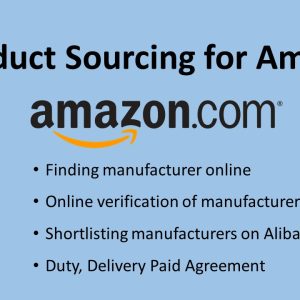As one of the largest e-commerce platforms in the world, Amazon is a great place for entrepreneurs to sell their products. However, with millions of products available on the site, it can be difficult for sellers to stand out from the competition. This is where Amazon product hunting and research comes in.
Product hunting and research is the process of finding profitable products to sell on Amazon. It involves identifying gaps in the market, researching potential products, and analyzing data to determine if a product is likely to be successful. In this blog post, we’ll explore the steps involved in product hunting and research on Amazon.
Step 1: Identify a profitable niche
The first step in product hunting and research is to identify a profitable niche. A niche is a specific area of the market that has high demand but low competition. By identifying a niche, sellers can create products that meet the needs of a specific group of customers, rather than trying to compete with larger, more established brands.
To identify a niche, sellers should start by researching popular categories on Amazon. They can use tools like Jungle Scout, Helium 10, or AMZScout to analyze sales data and identify categories with high demand and low competition. They should also look for products with high profit margins, as this will ensure that they can make a profit on their sales.
Step 2: Research potential products
Once a niche has been identified, the next step is to research potential products. This involves looking at what products are already available in the niche and identifying gaps in the market. Sellers can use Amazon’s search bar to look for products in their niche and analyze their sales data. They can also use tools like Google Trends to identify trends in the market and identify potential product ideas.
When researching potential products, it’s important to look for products with high demand and low competition. Products with high demand will sell well, while products with low competition will be easier to rank for on Amazon. Sellers should also look for products with high profit margins, as this will ensure that they can make a profit on their sales.
Step 3: Analyze data
The next step in product hunting and research is to analyze data. This involves looking at sales data, customer reviews, and other data points to determine if a product is likely to be successful. Sellers can use tools like Jungle Scout, Helium 10, or AMZScout to analyze sales data and identify products with high demand and low competition.
When analyzing data, sellers should look for products with a high number of sales, a high number of positive reviews, and a low number of negative reviews. They should also look at the competition for the product and determine if they can create a product that is better or offers unique features that will set it apart from the competition.
Step 4: Source the product
Once a profitable product has been identified, the next step is to source it. This involves finding a manufacturer or supplier that can create the product at a reasonable price. Sellers can use platforms like Alibaba or AliExpress to find suppliers in China, or they can look for domestic suppliers.
When sourcing a product, it’s important to consider the quality of the product, the price, and the lead time. Sellers should also look for suppliers who are willing to work with them to create custom products or who offer private labeling services.
Step 5: Launch the product
The final step in product hunting and research is to launch the product. This involves creating a listing on Amazon and promoting the product to potential customers. Sellers should optimize their listing with high-quality photos, a detailed description, and relevant keywords to improve their visibility on Amazon. They should also promote their product through social media, email marketing, and Amazon PPC (Pay-Per-Click) advertising to drive sales.




